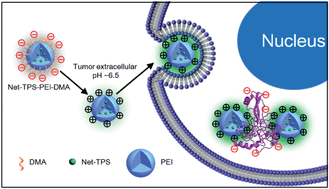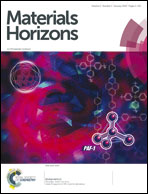A fluorescent light-up nanoparticle probe with aggregation-induced emission characteristics and tumor-acidity responsiveness for targeted imaging and selective suppression of cancer cells†
Abstract
A pH-responsive light-up nanoparticle probe with aggregation-induced emission (AIE) features was designed and synthesized. The probe carries negative charges and shows very weak fluorescence under physiological conditions. In a tumor acidic extracellular microenvironment, the nanoparticle probe can switch to positive surface charge and thus significantly light up cancer cells, allowing for targeted imaging and selective suppression of cancer cells. As AIE nanoparticles are known for high fluorescence in the aggregate state, this study represents the first example of light-up AIE nanoparticle probe design.


 Please wait while we load your content...
Please wait while we load your content...